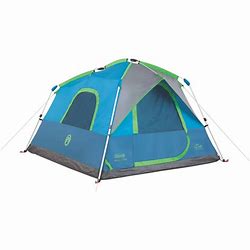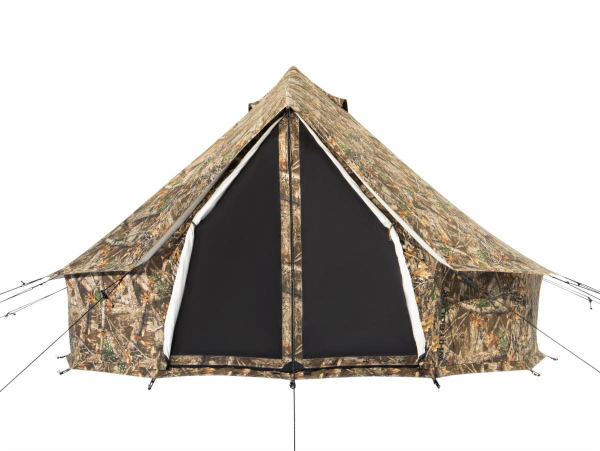Camping in a Coleman Signal Mountain Tent
By Glen Wunderlich
Charter Member Professional Outdoor Media Association
Camping tents have come a long way over the years. While I’m sure there are some survivor canvas–style tents stashed away in some dark corner of the garage or basement, who wants to deal with all the poles and complicated procedures to erect them? Count me out. It’s simply not practical to race somewhere for half a day and then attempt to recall which pole gets assembled to which pole and in what order. Fumbling around in darkness with everyone seemingly pulling in different directions is enough to send unhappy campers to the nearest holiday hotel.
Just as it is with pop-up ground hunting blinds, outdoor life has been made much friendlier with instant shelters, canopies and tents of all sizes. Inflatable ground blinds that use no poles whatsoever are in use today, as well as hub-style blinds that are as easy to set up as umbrellas. The tent market has caught on, as well.
Last year, when I went on a fishing trip, I packed an older model two-person tent that employs a few fiberglass, shock-corded poles. However, with my metal cot inside, the tent was not large enough to accommodate the cot without its touching the walls of the shelter. That’s fine if there’s no rain, but heck, this is Michigan. I had to come up with a better system.
After considering options, I became interested in a Coleman Signal Mountain design that falls into the instant category.

Coleman Signal Mountain Tent
However, with this unit, the poles are already attached to the lightweight nylon material. There is absolutely no assembly required! Just spread it out on the ground and push the aluminum poles to full length until they snap into position and poof! You’re camping.
Although this model shows it as a six-person tent, they’d have to be some tiny people. But, with its 10×9-foot floor space, it was spacious enough for my cot and a double-bed air mattress. Plus, it has 5 feet, 11 inches of head space – enough to stretch out for the average person.
The revolutionary tent has plenty of screened window openings – at least one on each side – plus a large screened door and even a tiny, zippered opening near the floor for running an electrical cord or hose inside. The zippered door and windows have rain flaps, to minimize the chance of water infiltration, but I found the door zipper difficult to operate without getting it caught in the flap.
The tent has a full floor that extends upward a half-foot into the walls for added protection against ground water and includes a small repair patch for emergency use. A separate tarp (bring your own) placed on the ground is recommended to minimize damage.
Although I have yet to figure out the best means of getting it back into the storage bag supplied, it can be accomplished, but it will take a bit of practice and technique foreign to me so far. Because of the design of the roof and the relatively light-weight design, this tent would probably collapse under the weight of snow, but it should suffice in rainy conditions and moderately strong wind.
For about $100, I found the Coleman Signal Mountain model right for my needs, but larger sizes are available online and elsewhere. If you want to avoid the frustration of complicated tents, when you are attempting to “get away from it all”, this is one solution. And finally, as much as I cringe at the term “happy campers”, this instant shelter could actually be a means to create a few of them.






